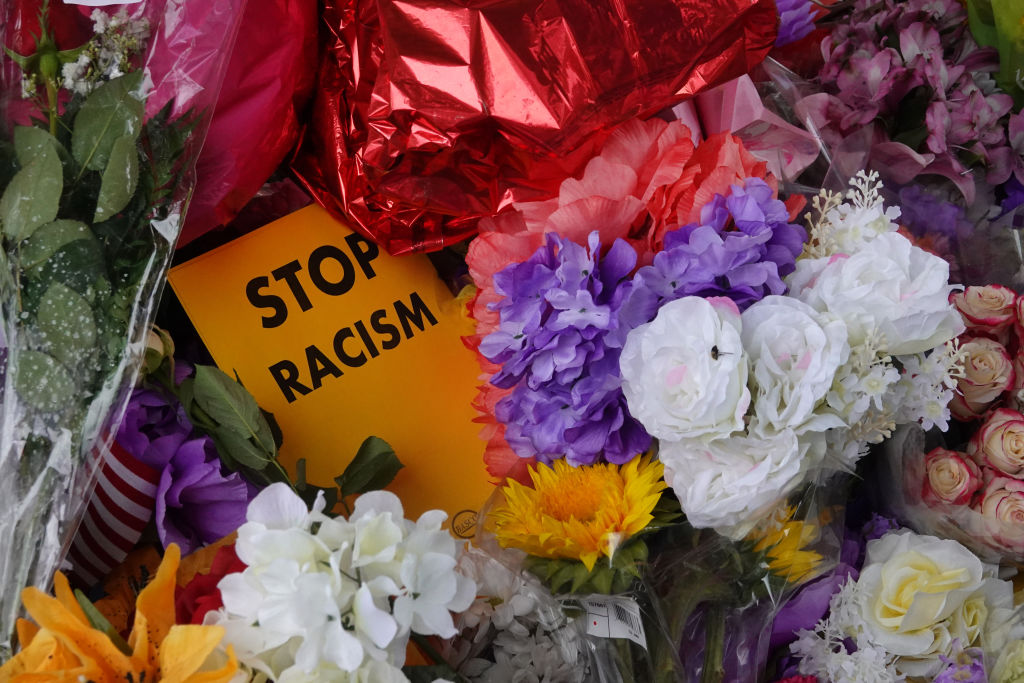
The FBI’s annual report on hate crime in America, released Monday, shows that about 7,300 hate-crime incidents were reported in the United States in 2021. That number represents a drop of nearly 1,000 incidents from 2020—but experts say it’s a woefully incomplete picture of hate crimes in America.
That’s because nearly 7,000 of the country’s more than 18,000 law-enforcement agencies—including the New York Police Department and Los Angeles Police Department—failed to submit any hate crime data to the federal report. Only 15 of the 750 agencies in the state of California participated, and the state of Florida only reported a single hate crime for 2021. For the 2020 report, more than 80% of jurisdictions participated.
“Hate crimes tear at the fabric of our society and traumatize entire communities,” said Jonathan Greenblatt, the CEO of the Anti-Defamation League, in a statement. “The failure by major states and cities across the country to report hate crime data essentially—and inexcusably—erases the lived experience of marginalized communities across the country.”
Huge gaps in hate crime stats
The FBI defines a hate crime as a “criminal offense which is motivated, in whole or in part, by the offender’s bias(es) against” a victim’s race, religion, disability, gender—or other characteristic. A 1990 law requires the government to track hate crimes, but it remains up to individual law-enforcement agencies whether they tell the FBI how many and what kind of hate crimes they encountered during a given year. This year fewer than two-thirds of police departments provided their hate crime data—a problem that was also seen months ago when the FBI released its 2021 overall crime report.
The biggest problem this year is down to a change in the way that the FBI is collecting crime data from local agencies. The National Incident-Based Reporting System (NIBRS), a new software that seeks to “improve the overall quality of crime data collected by law enforcement” is the big culprit. The FBI announced several years ago that it would transition to the NIBRS by 2021, and about $120 million was distributed to agencies to help phase out the previous Summary Reporting System.
Despite having ample time to make the transition, many jurisdictions waited too long and were unable to make the deadline to submit hate-crime numbers, says Richard Rosenfeld, the Curators’ Distinguished Professor Emeritus of criminology and criminal justice at the University of Missouri–St. Louis.
“The FBI had a choice,” he says. “It could either permit those agencies to submit data they had compiled under the old system so we’d have at least bottom-line measures for major crimes, or the FBI could have done what it did and insist that if you don’t meet the deadline, that your data will not be included.”
Rising hate crimes
Despite the FBI reporting a drop in total reported hate crimes in 2021, the previous year saw the highest number of hate-crime incidents recorded since 2001. The agency itself has issued guidance discouraging comparisons between the 2021 report and those of recent years, and noted in releasing the data that, in the jurisdictions that did participate, hate-crime incidents did not seem to fall.
“Although the hate crime statistics reported to us are lower in 2021, hate crime statistics overall are not decreasing, meaning of the agencies that are reporting to us, they are reporting an increase in hate crime,” the FBI said in a press call before the report’s release, according to VOA News. And states like New Jersey that previously released state-level hate-crime data found that 2021 saw record highs for reported bias incidents locally. California’s state count saw reported hate crime events increase by nearly a third from 2020 to 2021.
The missing data won’t just affect statisticians. It could also have an important impact on vulnerable communities across America.
Susan Corke, Director of the Intelligence Project at the Southern Poverty Law Center, which monitors the radical right in the U.S., warns that the lack of data is especially devastating in the context of armed white-nationalist groups backing candidates for election and winning positions of power. The FBI itself recognizes that these statistics are necessary to help provide lawmakers with “justification for certain legislation” and “help law enforcement address issues for their communities.”
“We want our political debates about crime and hate crime to be based on complete and accurate data,” Rosenfeld tells TIME. “When the data is subject to such uncertainties, then political leaders, advocacy groups, and others are simply able to concoct their own narrative.”
Rosenfeld and Corke both say that making it mandatory for local law enforcement to provide hate-crime statistics to the FBI would be a huge step in helping adjust the numbers in coming years. That decision could only be made by Congress.
President Biden previously signed a law that helped make the reporting of hate crimes more accessible in 2021, and created hotlines for hate crime reporting for non-English speakers.
For now, the Justice Department—which oversees the FBI—maintains that it will be committed to prioritizing the “prevention, investigation and prosecution of hate crimes.”
“No one in this country should be forced to live their life in fear of being attacked because of what they look like, whom they love, or where they worship,” said Associate Attorney General Vanita Gupta in a statement on Monday. “The department will continue to use all of the tools and resources at our disposal to stand up to bias-motivated violence in our communities.”
More Must-Reads from TIME
- Cybersecurity Experts Are Sounding the Alarm on DOGE
- Meet the 2025 Women of the Year
- The Harsh Truth About Disability Inclusion
- Why Do More Young Adults Have Cancer?
- Colman Domingo Leads With Radical Love
- How to Get Better at Doing Things Alone
- Michelle Zauner Stares Down the Darkness
Contact us at letters@time.com